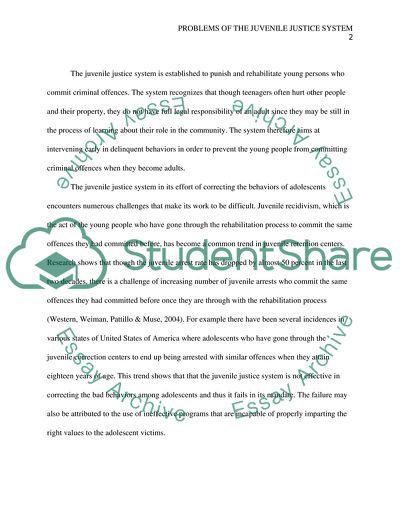Cite this document
(Problems of the Juvenile Justice System Essay Example | Topics and Well Written Essays - 2250 words, n.d.)
Problems of the Juvenile Justice System Essay Example | Topics and Well Written Essays - 2250 words. https://studentshare.org/law/1853018-problems-of-the-juvenile-justice-system
Problems of the Juvenile Justice System Essay Example | Topics and Well Written Essays - 2250 words. https://studentshare.org/law/1853018-problems-of-the-juvenile-justice-system
(Problems of the Juvenile Justice System Essay Example | Topics and Well Written Essays - 2250 Words)
Problems of the Juvenile Justice System Essay Example | Topics and Well Written Essays - 2250 Words. https://studentshare.org/law/1853018-problems-of-the-juvenile-justice-system.
Problems of the Juvenile Justice System Essay Example | Topics and Well Written Essays - 2250 Words. https://studentshare.org/law/1853018-problems-of-the-juvenile-justice-system.
“Problems of the Juvenile Justice System Essay Example | Topics and Well Written Essays - 2250 Words”. https://studentshare.org/law/1853018-problems-of-the-juvenile-justice-system.


